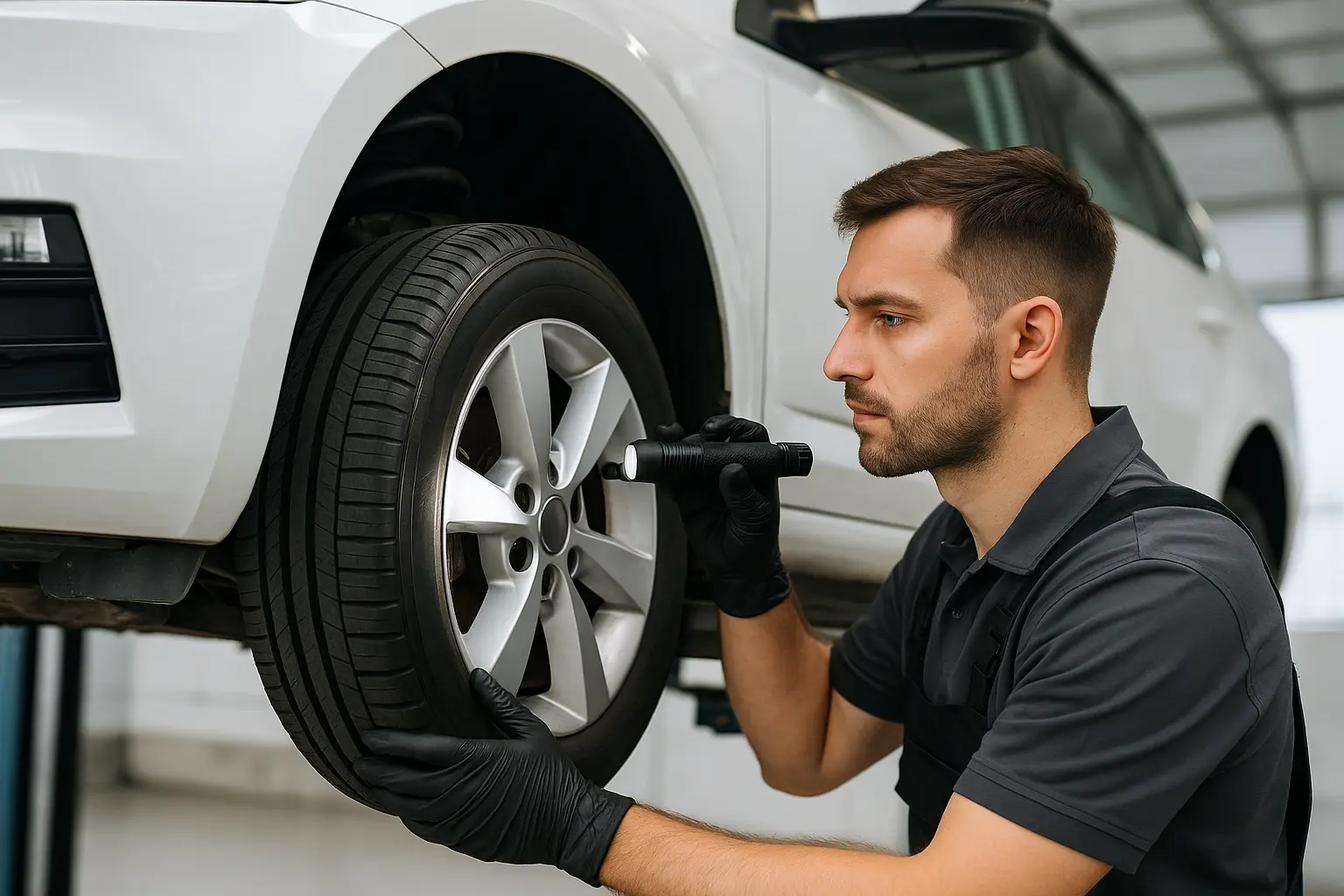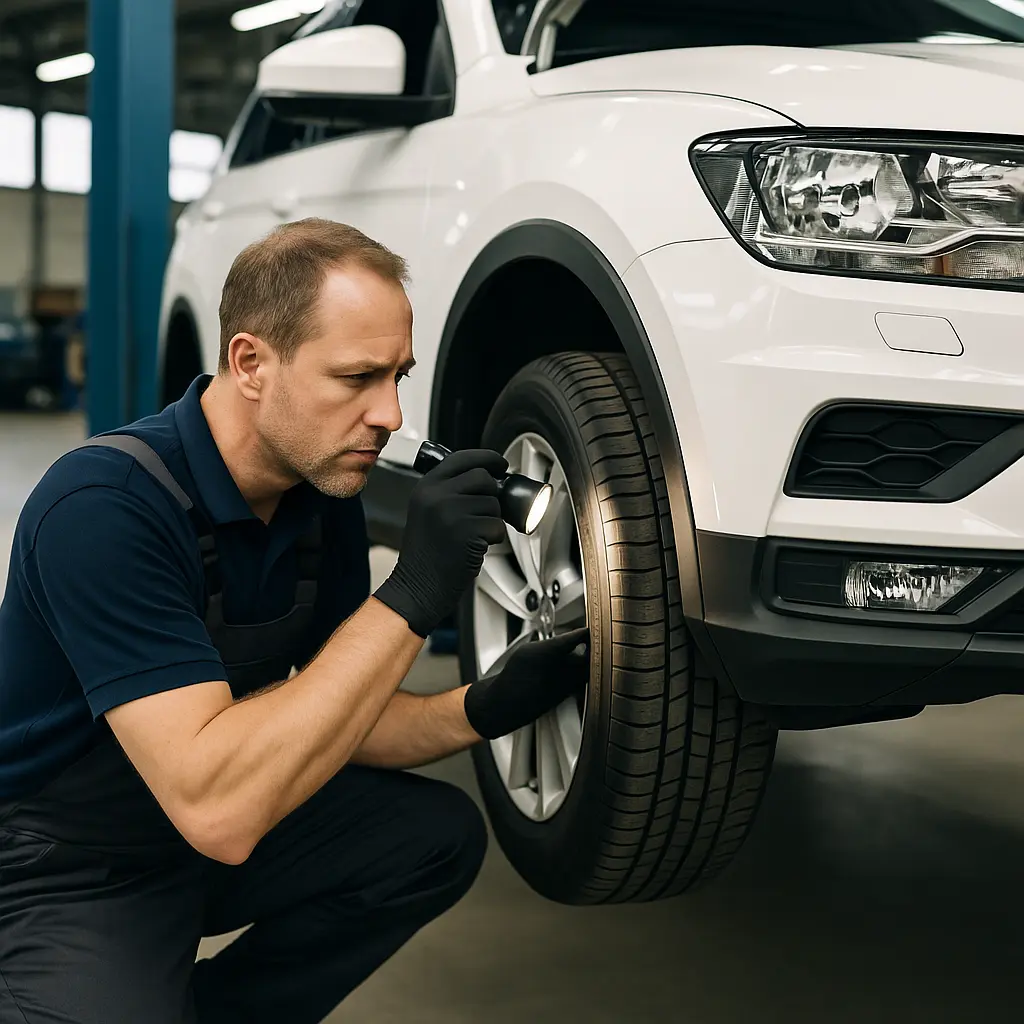What’s Included in a Roadworthy Certificate? Full Breakdown for Buyers (2025 Australia Guide)
Table of Contents
Introduction
What Is a Roadworthy Certificate?
When Do You Need a Roadworthy Certificate in Australia?
Who Issues Roadworthy Certificates?
Roadworthy vs. Safety Certificate – Any Difference?
The Full Roadworthy Checklist
Wheels & Tyres
Steering & Suspension
Brakes
Lights & Electrical
Windscreen, Wipers & Mirrors
Body & Chassis
Seats & Seatbelts
Engine & Emissions
LPG Systems (if fitted)
Speedometer & Odometer
What’s Not Included in a Roadworthy Certificate?
How Much Does a Roadworthy Certificate Cost in 2025?
How Long Is a Roadworthy Certificate Valid For?
Common Reasons Cars Fail Roadworthy Checks
Tips to Pass a Roadworthy Inspection
Roadworthy Certificates by State – Differences Explained
Roadworthy and Buying a Used Car – What Buyers Must Know
Conclusion
1. Introduction

Whether you're buying a used car, selling your old vehicle, or transferring registration in Australia, you'll encounter one term repeatedly: Roadworthy Certificate (often shortened to RWC). But what exactly does it include? And why is it so important for buyers?
This in-depth guide explores every component checked during a roadworthy inspection, plus extra insights that can help you make an informed car purchase in 2025.
2. What Is a Roadworthy Certificate?
A roadworthy certificate is an official document that certifies a vehicle is safe to drive on public roads. It doesn't guarantee the vehicle is in perfect mechanical condition—but it does ensure the minimum safety standards are met, as set by state or territory legislation.
It’s not a mechanical warranty. Think of it more like a pass/fail checklist for road safety compliance.
3. When Do You Need a Roadworthy Certificate in Australia?
You generally need a roadworthy certificate in the following situations:
Selling a used car
Re-registering a vehicle
Transferring registration to a new owner
Registering a vehicle from interstate or overseas
Each state has specific rules. For instance, in Victoria, sellers must provide an RWC at the time of sale. In NSW, inspections fall under the eSafety Check system, commonly known as a pink slip.
4. Who Issues Roadworthy Certificates?
Roadworthy certificates must be issued by a licensed vehicle tester or authorised inspection station, depending on your state:
VIC: Licensed Vehicle Tester
NSW: Authorised Inspection Station (AIS)
QLD: Approved Inspection Station (AIS)
WA: Transport inspection centres or authorised agents
SA, TAS, NT: Varies – often not mandatory for private sales
5. Roadworthy vs. Safety Certificate – Any Difference?
Terminology varies:
QLD calls it a Safety Certificate
VIC calls it a Roadworthy Certificate
NSW refers to an eSafety Check
Functionally, all serve the same purpose: ensuring a car is safe for road use before transferring registration.
6. The Full Roadworthy Checklist
Let’s break down the key components inspected during a roadworthy evaluation in 2025:
a) Wheels & Tyres
Legal tread depth: 1.5mm minimum
No cracks, bulges, or exposed cords
Rims free of major dents or cracks
All tyres must match in size & type on each axle
b) Steering & Suspension
No excessive play or looseness
Bushings, tie rods, springs in good condition
Shock absorbers functional and leak-free
Power steering fluid level & belt condition
c) Brakes
Front and rear brakes must be effective
Parking brake (handbrake) must work
Brake fluid reservoir full and uncontaminated
Discs, drums, pads, and hoses inspected for wear
d) Lights & Electrical
Headlights, brake lights, reverse lights working
Indicators and hazard lights functional
Dash lights and instrument cluster checked
Battery secure and terminals clean
e) Windscreen, Wipers & Mirrors
No major cracks obstructing vision
Windscreen wipers effective and washers working
Rear-view and side mirrors correctly mounted
f) Body & Chassis
No rust holes or major damage
Doors, boot, and bonnet must latch securely
Underbody checked for structural damage or leaks
g) Seats & Seatbelts
Seats firmly attached and adjustable
Seatbelts retract properly, not frayed or cut
Seatbelt buckles must engage and release securely
h) Engine & Emissions
No excessive oil leaks
Engine runs smoothly without excessive smoke
Exhaust system securely fitted and not leaking
Emission levels within limits (in emission-controlled zones)
i) LPG Systems (If Fitted)
LPG system must be certified and up to date
Tank must not be expired
No gas leaks or irregular fittings
j) Speedometer & Odometer
Must function correctly
Odometer tampering is illegal
7. What’s Not Included in a Roadworthy Certificate?
A roadworthy certificate doesn’t cover:
Engine health or performance
Transmission operation
Air conditioning
Vehicle service history
Cosmetic damage
Infotainment or navigation systems
It’s purely about safety-related components.
8. How Much Does a Roadworthy Certificate Cost in 2025?
Costs vary depending on your state and inspection station:
VIC: $180–$250
NSW: ~$45 for a pink slip
QLD: ~$90–$120 for a safety certificate
WA: ~$80–$150 depending on where you go
You’ll pay more if repairs are needed before the certificate can be issued.
9. How Long Is a Roadworthy Certificate Valid For?
Certificate validity periods in 2025:
VIC: 30 days from issue
NSW: Valid for 42 days or 1000 km
QLD: 2 months (private), 1 month (dealers)
WA/SA/TAS/NT: Varies or not mandatory
Always check the issue date and expiry rules in your state.
10. Common Reasons Cars Fail Roadworthy Checks
Top reasons include:
Worn brake pads or uneven braking
Tyres below legal tread limit
Faulty lights or electrical wiring
Worn suspension bushings
Oil leaks or cracked hoses
Windscreen chips or cracks
Seatbelts not retracting properly
11. Tips to Pass a Roadworthy Inspection
If you’re selling or prepping your car:
Check tyres and inflate to proper pressure
Top off fluids (brake, coolant, washer, oil)
Replace blown bulbs and check dash lights
Clean the car and underbody
Fix minor issues like wipers, horn, or mirrors
Consider a pre-inspection check from a mechanic
12. Roadworthy Certificates by State – Quick Breakdown
| State/Territory | Is RWC Mandatory? | Who Issues It? | Validity |
|---|---|---|---|
| VIC | Yes (sale/reg) | Licensed Vehicle Tester | 30 days |
| NSW | Yes (eSafety) | Authorised Inspection Station | 42 days/1000km |
| QLD | Yes (sale/reg) | Approved Inspection Station | 2 months |
| WA | Yes (reg) | Transport WA or agents | Until vehicle changes |
| SA | No (usually) | N/A | N/A |
| TAS | No (usually) | N/A | N/A |
| NT | Yes (selective) | Authorised inspectors | 30 days |
| ACT | Yes (sale/reg) | Access Canberra | 30 days |
13. Roadworthy and Buying a Used Car – What Buyers Must Know
When buying a used vehicle, a current roadworthy certificate is vital if you plan to register the vehicle in your name.
Buyer's checklist:
Ask for a current RWC before final payment
Verify certificate date and issuing station
Get an independent pre-purchase inspection
Don’t rely solely on a roadworthy—it’s not a full mechanical report
Confirm odometer matches advertised mileage
14. Conclusion
Understanding what’s included in a roadworthy certificate helps buyers make smarter decisions when purchasing a used car. While the certificate focuses on basic safety compliance, it’s not a substitute for a comprehensive mechanical inspection.
If you’re serious about getting the best value—and avoiding future repair bills—use this checklist to assess vehicle condition, even before a formal inspection. Whether you're a buyer, seller, or just renewing rego, knowing what’s checked keeps you road-legal and safe in 2025.
Leave a comment
Your email address will not be published. Required fields are marked *




















